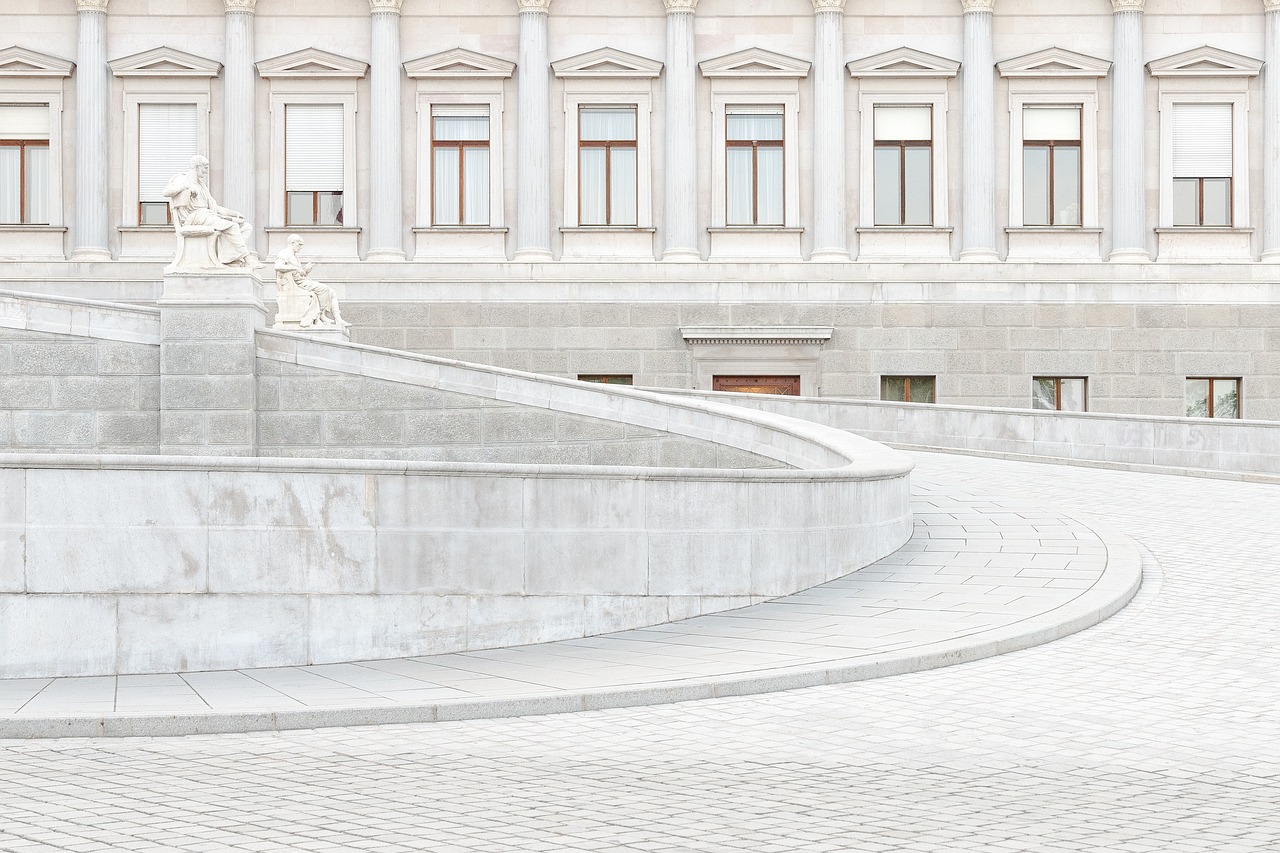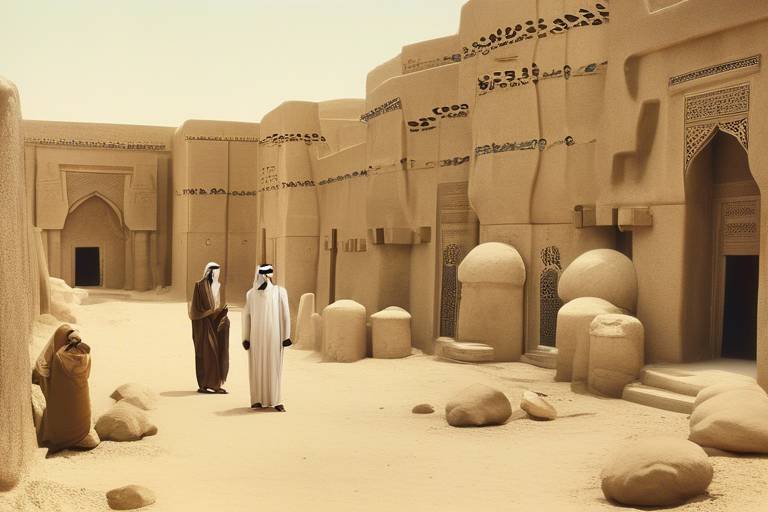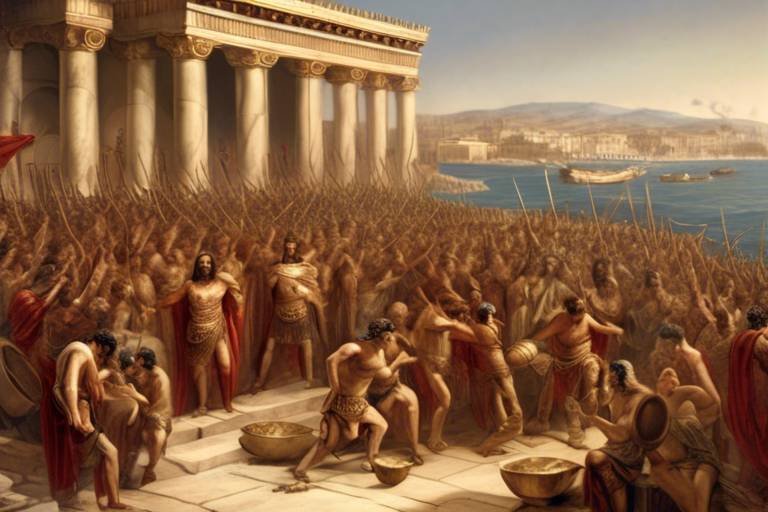The Forgotten Civilizations of the Arabian Peninsula
Have you ever wondered about the hidden gems of history that lie scattered across the vast expanse of the Arabian Peninsula? These ancient civilizations, often overshadowed by more well-known counterparts, hold a wealth of stories waiting to be unearthed. Let's embark on a journey to explore the forgotten civilizations that once thrived in this enigmatic region, shedding light on their rich history, cultural contributions, and architectural marvels.

Pre-Islamic Civilizations
Before the rise of Islam, the Arabian Peninsula was home to a multitude of diverse and flourishing civilizations, each with its own unique characteristics and contributions to the region's rich history. Among these pre-Islamic civilizations were the Nabateans, Lihyanites, and Kindites, who left behind a legacy of remarkable achievements and archaeological wonders.
The Nabateans, known for their impressive rock-cut architecture and advanced water management systems, thrived in the deserts of modern-day Jordan and Saudi Arabia. Their capital city of Petra, carved into rose-red cliffs, stands as a testament to their engineering prowess and artistic sophistication.
The Lihyanites, centered in the northwestern part of the Arabian Peninsula, were skilled traders and builders, leaving behind inscriptions and tombs that provide valuable insights into their culture and societal structure. Their influence extended across the region, connecting various communities through trade and diplomacy.
The Kindites, a nomadic tribe known for their military prowess and poetic traditions, played a significant role in the political landscape of ancient Arabia. Their kingdom, located in the southern part of the peninsula, flourished through strategic alliances and control of key trade routes.
These pre-Islamic civilizations thrived in a landscape shaped by trade routes that crisscrossed the Arabian Peninsula, connecting them to distant lands and fostering a vibrant exchange of goods, ideas, and technologies. The caravan trade played a crucial role in the economic prosperity of these civilizations, facilitating cultural interactions and the spread of knowledge.
Through their intricate pottery, exquisite jewelry, and masterful sculptures, the forgotten civilizations of the Arabian Peninsula expressed their unique identities and cultural influences. Artistic traditions such as rock art, metalwork, and textile production flourished, reflecting the creativity and skill of ancient artisans.
Despite their achievements, the pre-Islamic civilizations of the Arabian Peninsula faced challenges that led to their eventual decline. Factors such as environmental changes, political instability, and external invasions contributed to the waning of these once-mighty societies, leaving behind a legacy that continues to intrigue archaeologists and historians.
Today, ongoing efforts are being made to rediscover and preserve the remnants of these forgotten civilizations, ensuring that their heritage is safeguarded for future generations. Archaeological excavations, conservation projects, and cultural initiatives aim to shed light on the past glory of these ancient societies and raise awareness of their importance in shaping the history of the Arabian Peninsula.
The enduring impact of the pre-Islamic civilizations on modern society is evident in the architectural influences, cultural practices, and artistic traditions that continue to shape the region today. From the majestic ruins of Petra to the timeless poetry of the Kindites, the legacy of these forgotten civilizations lives on in the hearts and minds of those who seek to unravel the mysteries of the past.

Trade Routes and Commerce
Trade routes and commerce played a pivotal role in the development and prosperity of the ancient civilizations that once thrived on the Arabian Peninsula. These routes not only facilitated the exchange of goods but also served as conduits for the transmission of ideas, technologies, and cultures.
One of the most renowned trade routes was the Incense Route, which connected the Arabian Peninsula to the Mediterranean world. This route enabled the transportation of valuable frankincense and myrrh from southern Arabia to markets in the Roman Empire, Egypt, and beyond. The lucrative trade in aromatic resins fueled the economy of the region and attracted merchants from distant lands.
Moreover, the Arabian Peninsula's strategic location at the crossroads of Asia, Africa, and Europe made it a hub for trade between the East and the West. The bustling ports of ancient cities like Petra, Mecca, and Aden served as vital trading hubs where merchants from different regions converged to exchange goods such as spices, textiles, and precious metals.
The prosperity brought by trade not only enriched the economies of the Arabian Peninsula but also fostered cultural exchange and innovation. The interactions between merchants, travelers, and residents from diverse backgrounds led to the amalgamation of artistic styles, architectural techniques, and culinary traditions, creating a vibrant tapestry of cultural diversity.
Furthermore, the wealth generated by commerce enabled the construction of impressive infrastructure projects, such as sophisticated irrigation systems, well-maintained roads, and grand marketplaces. These developments not only facilitated trade but also enhanced the quality of life for the inhabitants of the ancient civilizations, fostering growth and prosperity.
In essence, trade routes and commerce were the lifeblood of the forgotten civilizations of the Arabian Peninsula, fueling their prosperity, fostering cultural exchange, and shaping the unique identities of these ancient societies.

Architectural Marvels
Uncover the architectural wonders of the forgotten civilizations of the Arabian Peninsula, where ancient structures stand as testaments to the ingenuity and craftsmanship of their builders. Among these marvels, the rock-cut tombs of Madain Saleh emerge as striking examples of architectural mastery, intricately carved into the sandstone cliffs. These tombs, reminiscent of Petra in Jordan, showcase the blending of Nabatean and other influences, creating a unique architectural style that mesmerizes visitors with its grandeur and historical significance.
In addition to the rock-cut tombs, the Hadramaut region boasts ancient irrigation systems that highlight the engineering prowess of the civilizations that once thrived in the arid landscapes of the Arabian Peninsula. These systems, featuring intricate channels and reservoirs, enabled agricultural productivity in an otherwise challenging environment, demonstrating the innovative solutions devised by ancient societies to sustain their populations and foster economic prosperity.

Art and Culture
Explore the ancient and lesser-known civilizations that once thrived on the Arabian Peninsula, shedding light on their rich history, cultural contributions, and architectural marvels that have often been overshadowed by more well-known civilizations.
When delving into the artistic expressions and cultural traditions of the forgotten civilizations of the Arabian Peninsula, one is met with a tapestry of creativity and heritage. The intricate pottery, jewelry, and sculptures unearthed from archaeological sites offer a glimpse into the unique identities and influences that shaped these ancient societies.
The artistry of the Nabateans, with their elaborate rock-cut facades in Petra, showcases a blend of indigenous styles and influences from neighboring regions. These intricate carvings not only served as architectural marvels but also as a reflection of the Nabatean's craftsmanship and artistic prowess.
Furthermore, the Lihyanites' mastery of metalwork and their intricate designs on artifacts highlight their sophistication and aesthetic sensibilities. The detailed engravings on ceremonial objects and jewelry speak volumes about the cultural significance attached to craftsmanship in their society.
Similarly, the Kindites' artistic endeavors, such as their distinctive sculptures and relief carvings, reveal a deep connection to nature and spirituality. Their art not only adorned their living spaces but also served as a medium for storytelling and preserving their cultural heritage.
Through the lens of art and culture, we can appreciate the creativity and ingenuity of these forgotten civilizations, each leaving behind a legacy that transcends time and continues to inspire modern interpretations of Arabian artistic traditions.

Decline and Legacy
As the centuries passed, the once flourishing civilizations of the Arabian Peninsula began to face various challenges that ultimately led to their decline. Factors such as changing trade routes, invasions, and environmental changes played significant roles in the downfall of these ancient societies. The rise of Islam also marked a pivotal moment in the history of the region, ushering in a new era and overshadowing the remnants of the pre-Islamic civilizations.
Despite their decline, the legacy of these forgotten civilizations continues to resonate in the modern world. Their architectural achievements, artistic expressions, and cultural traditions have left an indelible mark on the Arabian Peninsula's heritage. The intricate carvings of the Nabateans, the grand structures of the Lihyanites, and the sophisticated irrigation systems of the Kindites stand as testaments to the ingenuity and creativity of these ancient peoples.
Archaeological discoveries have shed light on the rich history of the Arabian Peninsula's forgotten civilizations, allowing us to glimpse into the past and appreciate the achievements of those who came before us. Efforts to preserve and protect these archaeological sites are essential in ensuring that future generations can continue to learn from and be inspired by the legacy of these ancient societies.
The decline of the forgotten civilizations of the Arabian Peninsula serves as a reminder of the ebb and flow of history, highlighting the fragility of human achievements in the face of time and change. Their legacy endures not only in the ruins and artifacts they left behind but also in the cultural fabric of the modern societies that have emerged in their wake.

Rediscovery and Preservation Efforts
Rediscovery and preservation efforts play a crucial role in safeguarding the remnants of the forgotten civilizations of the Arabian Peninsula. Archaeologists and historians are dedicated to uncovering the hidden treasures buried beneath the sands of time. Through meticulous excavation and restoration projects, these experts strive to piece together the puzzle of ancient societies that once thrived in this region.
One of the key challenges in preserving these ancient sites is the harsh desert environment that constantly threatens to erode the delicate structures. To combat this, conservationists employ innovative techniques and technologies to protect the architectural marvels from further deterioration. By implementing sustainable preservation practices, they aim to ensure that these invaluable heritage sites remain intact for future generations to marvel at.
Collaborative efforts between local authorities, international organizations, and academic institutions have been instrumental in raising awareness about the significance of these forgotten civilizations. Educational programs, exhibitions, and cultural events are organized to shed light on the rich history and cultural heritage of the Arabian Peninsula's ancient inhabitants.
Furthermore, advancements in digital technologies have revolutionized the field of archaeology, allowing researchers to digitally reconstruct and preserve ancient sites in intricate detail. Virtual reality simulations and interactive exhibits provide immersive experiences that transport visitors back in time, offering a glimpse into the daily lives of the people who once walked the streets of these ancient cities.
Preservation efforts extend beyond physical structures to include the documentation and conservation of artifacts unearthed at archaeological sites. Pottery, jewelry, tools, and other relics offer valuable insights into the artistic and cultural practices of the forgotten civilizations. Museums and cultural institutions play a vital role in curating and displaying these artifacts, allowing the public to appreciate the craftsmanship and creativity of ancient artisans.

Impact on Modern Society
The forgotten civilizations of the Arabian Peninsula have left a lasting impact on modern society, influencing various aspects of culture, architecture, and traditions that continue to resonate today. Their legacy serves as a testament to the rich history and heritage of the region, shaping the identity of contemporary societies in profound ways.
One of the most notable impacts of these ancient civilizations is evident in the architectural influences that can be seen in modern structures across the Arabian Peninsula. The intricate designs, innovative construction techniques, and grandeur of the past continue to inspire contemporary architects and builders, blending tradition with modernity to create unique urban landscapes.
Moreover, the cultural practices and artistic traditions of the forgotten civilizations have endured through the centuries, manifesting in the vibrant arts scene and traditional craftsmanship of the region. From pottery and jewelry making to storytelling and music, the cultural heritage of these civilizations lives on in the everyday lives of the people, preserving a connection to the past.
The legacy of the forgotten civilizations also extends to societal norms and values, shaping the collective identity of communities and influencing social interactions. Concepts of hospitality, trade ethics, and community solidarity, rooted in the ancient past, continue to guide the behaviors and attitudes of individuals in the modern era, fostering a sense of continuity and shared heritage.
Furthermore, the archaeological discoveries and preservation efforts dedicated to safeguarding the remnants of these civilizations have sparked a renewed interest in history and heritage among the population. Museums, heritage sites, and educational programs focused on the ancient past have flourished, engaging both locals and tourists in the exploration and appreciation of their cultural roots.
In essence, the impact of the forgotten civilizations of the Arabian Peninsula on modern society is profound and multifaceted, weaving a tapestry of heritage, innovation, and resilience that transcends time. By acknowledging and celebrating this legacy, contemporary societies honor the contributions of their ancestors and ensure that the spirit of the past continues to thrive in the present and future.
Frequently Asked Questions
- What are some of the key pre-Islamic civilizations that existed on the Arabian Peninsula?
Some of the notable pre-Islamic civilizations on the Arabian Peninsula include the Nabateans, Lihyanites, and Kindites, each with their own unique cultural contributions and archaeological remnants.
- How did trade routes and commerce influence the civilizations of the Arabian Peninsula?
Trade routes and commerce played a significant role in connecting the Arabian Peninsula to distant lands, fostering cultural exchange, economic prosperity, and shaping the development of these ancient civilizations.
- What are some of the architectural marvels left behind by the forgotten civilizations of the Arabian Peninsula?
The architectural wonders include the intricate rock-cut tombs of Madain Saleh and the ancient irrigation systems of the Hadramaut region, showcasing the advanced engineering skills of these civilizations.
- How did the decline of the forgotten civilizations impact modern society?
The decline of these civilizations left a lasting legacy on modern society, influencing architectural styles, cultural practices, and historical narratives that continue to shape the region's identity today.
- What efforts are being made to rediscover and preserve the heritage of the forgotten civilizations?
Ongoing efforts focus on rediscovering and preserving the remnants of these civilizations, ensuring that their rich history and cultural heritage are safeguarded for future generations to appreciate and learn from.



















